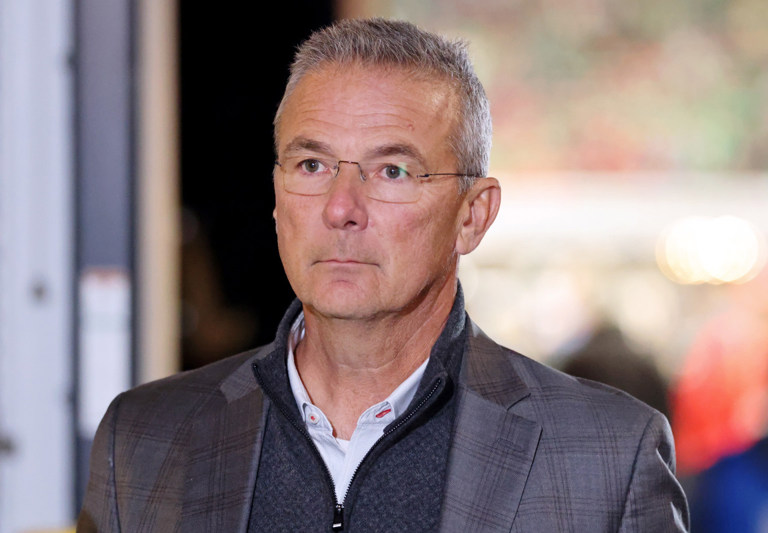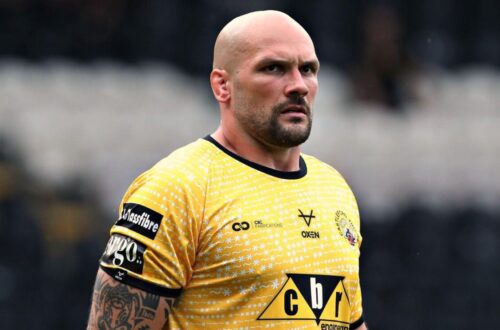When the Quiet Part Gets Spoken
In a recent appearance on The Triple Option podcast, former Florida head coach Urban Meyer made headlines not so much for what he said, but for how bluntly he said it. He argued that the primary reason University of Florida hasn’t pulled the plug on its current head coach, Billy Napier, is the $21 million buyout that would be owed if they fired him prematurely.
That’s not new in theory — buyouts are always part of the calculus — but Meyer’s tone and framing made it feel like he was exposing a truth most avoid mentioning publicly: in many of these coaching situations, financial obligations can outweigh performance.
Meyer didn’t spare Napier in his remarks either. He noted Florida’s record under Napier is 20–22, a mark that hasn’t endeared him to many in Gator Nation. He acknowledged that the expectations at Florida are high, and that the program’s trajectory under Napier has fallen short of what boosters, fans, and administrators envisioned.
Put together, Meyer’s commentary amounts to a kind of candid admission: even if a coach isn’t meeting expectations, sometimes the cost to fire him (in dollars, optics, and disruptions) is prohibitive.
The Triangle: Performance, Pressure, and Payouts
To understand why Meyer’s comments resonate, we need to look at three intertwined forces at play in big-time college football:
1. Performance vs. Expectations
Florida is one of the storied programs in the sport. Expectations are national titles, or at least consistent contention in the SEC. When the team underperforms, critics grow loud. But, as Meyer alluded, expectations sometimes shift downward: “When I took over the Florida Gators, you know what the expectations were. National championship. That’s not it any more at Florida right now.”
Napier inherited a program that demanded elite results — and when those aren’t delivered, the patience naturally shrinks.
2. Financial Realities & Contractual Constraints
Meyer’s main point: that $21 million buyout is real, structured, and already in motion. He questioned where the money would come from to terminate Napier now.
In modern college football, coaching contracts often include massive buyouts — a way for schools to protect themselves (and coaches) if early exits occur. But those protections can also create what amounts to “golden handcuffs”: a coach underperforming might still be retained because cutting ties is too expensive.
3. Institutional Risk & Roster Fallout
Beyond the financial commitment, other costs come into play. If a coach is fired midseason, there can be fallout in recruiting, transfers, player morale, and instability. Meyer hinted at some of those dynamics when discussing roster concerns and the timing of decisions.
Thus, even if the administration wants a change, the broader consequences — immediate and long term — weigh heavily.
Why Meyer’s Candor Matters
Meyer’s comments struck a nerve for several reasons:
He’s speaking as someone with credibility in Gainesville. Many fans still associate him with one of the program’s greatest eras, giving his perspective extra weight.
He named the elephant in the room. While analysts often allude to buyouts or financial burdens, openly stating “they’re keeping him because they can’t afford to fire him” crosses a line from speculation into blunt reality.
It reframes the narrative of Napier’s job security. No longer is it just about wins and losses — now, observers will be watching the ledger, contract clauses, and boardroom conversations.
Still, as one analysis argued, the buyout can’t remain the only reason to keep a poor coach in place. At some point, performance, institutional reputation, and long-term trajectories must outweigh financial inertia.
What’s Next for Florida and Napier?
Meyer’s remarks, whether intended as an indictment or an observation, highlight the difficult position Florida finds itself in. Some likely developments:
Waiting for a later evaluation point. Rather than act now, Florida might reassess Napier after the season, when the financial and roster implications are muted.
Looking for creative financial solutions. If the university is truly serious about moving on, they may explore bridging deals, deferred payments, or internal reallocation to cover a buyout.
Increasing pressure on performance. With his job seemingly insulated by a contract, Napier might face more scrutiny in every game, every decision.
Changing expectations in the fan and media narrative. Thanks to Meyer, conversations may shift from “Should Napier be fired?” to “Can Florida afford not to fire him?”
Final Thoughts
What Meyer did was simple yet provocative: he pulled back the curtain. In doing so, he forced a broader conversation about power, money, and accountability in college sports. Coaches are often judged on outcomes, but when those outcomes conflict with contract structures, the math becomes complicated.
If nothing else, Meyer’s comments serve as a reminder: in the highest echelons of college football, sometimes the quiet parts we whisper behind closed doors are the hardest ones to speak — and the most revealing once they are.





